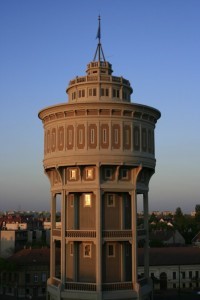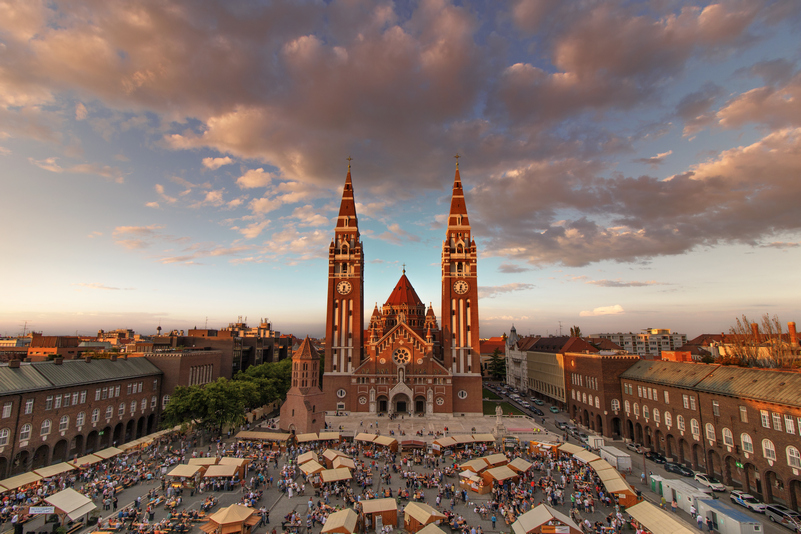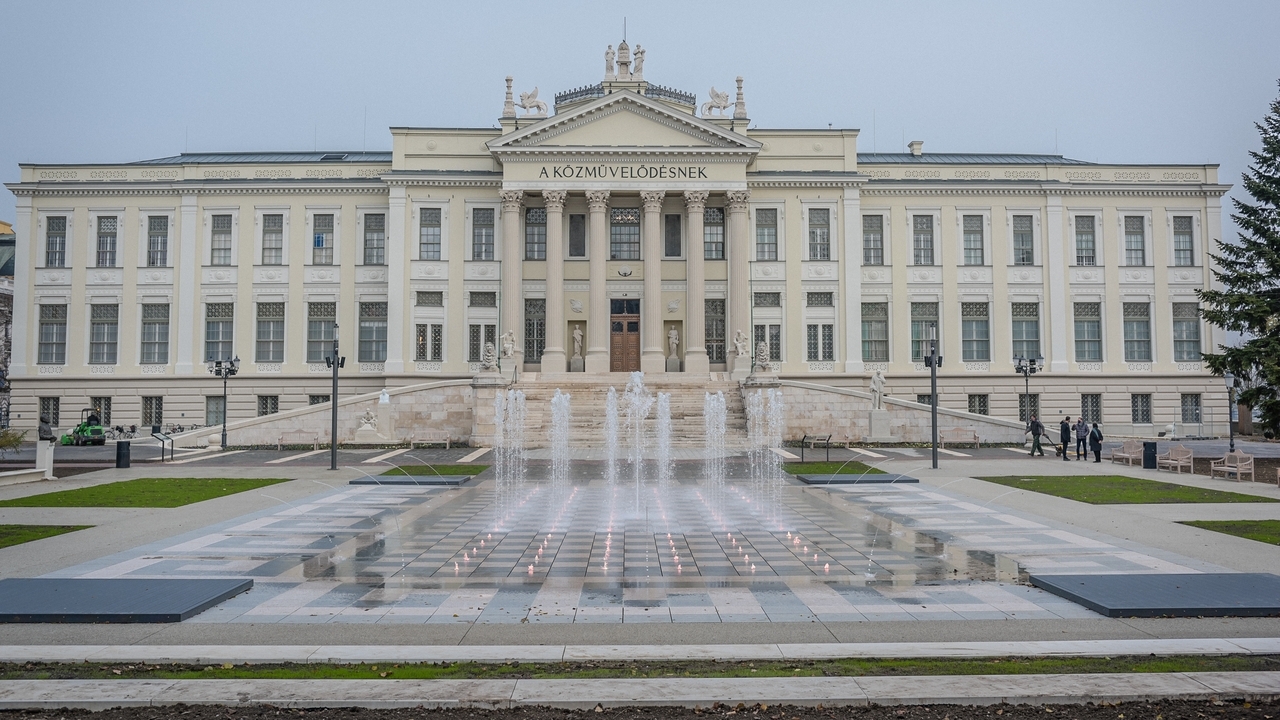There is a place in Szeged where we can recall the old legends of the witches of Szeged. It is the Witches' Island, that received its name after the execution of 12 people. How did these tragic events start?

SZEGED
Szeged is the third largest city of Hungary, and the regional centre of the Southern Great Plain and the county town of Csongrád county. The University of Szeged is one of the most distinguished universities in Hungary with around 30,000 students.
The famous Open Air Festival of Szeged (first held in 1931) is one of the main attractions in July-August each year; furthermore, in late spring the Day of the City is celebrated on May 21.

Albert Szent-Györgyi de Nagyrápolt (September 16, 1893 - October 22, 1986) was a Hungarian biochemist who won the Nobel Prize in Physiology or Medicine in 1937. He is credited with first isolating vitamin C and discovering the components and reactions of the citric acid cycle.
The present image of Szeged is defined by the constructions after the Great Flood in 1879, which occurred in the spirit of Art Nouveau, and as a result Szeged has become a city of palaces. The upper middle-class luxury mansions reveal their interior magnificence, wrought iron staircases, original tiles and colorful glass windows. Here are some of...
Cathedral "Votive Church"
After the Great Flood (1879) destroying the city, the people of Szeged made an oath to build a majestic catholic church. Following a long period of planning and several debates it wasn't until 1913 that the construction started. Being too costly, the original plans of Frigyes Schulek were modified by Ernő Foerk. The Cathedral, which is the fourth...
Saint Demetrius Tower
Outside the Votive Church stands the Saint Demetrius Tower, the oldest architectural relic of the city. The remains of the church erected in honour of Saint Demetrius of Thessaloniki living in the 4th century is called the Dömötör Tower by the people of Szeged. Its foundation is from the 11th century, its lower, Roman style part is from the 12th...
Musical Clock
The tunes of this unique piece of art by watchmaker Ferenc Csúri could be first heard at the Open Air Festival in 1936. The music clock on the upper level of the building, opposite the main entrance of the Votive Church is a symbol of medieval universities. Twice a day, at 12.15 and 17.45 it shows the walk of the...
Móra Ferenc Museum
The Móra Ferenc Museum is located in the heart of Szeged, at the intersection of the river Tisza and the Downtown Bridge, and its glamorous building is a defining part of the cityscape. The institution is an outstanding cultural centre of the region. In addition to its permanent and constantly changing temporary exhibitions, the "Palace of Culture"...
Synagogue
The "new" synagogue and the head office of the Jewish community was planned by Lipót Baumhorn after winning the contest of design. The building operations began in August of 1900 and ended by October 1902. We can recognise nearly all architectural styles in this monumental 48,5 meter (158,5 feet) tall building. The basic overall appearance is...
City Hall
The present City Hall is the third building in the same place with the same function. The first building of a modest design was raised in 1728. It was followed by the second one with the same area as the present hall, designed by István Vedres at the turn of the 18th and 19th centuries. After the flood devastating almost...
Situated in Alsóváros (lower city), Szeged, the monastery and the church together form Hungary's second largest church complex, keeping its original function. The observant branch of the Franciscans settled down in the city in 1444. To build the present late gothic style church, built between 1480 and 1503, they used the material of the 12th...
Click on "Korábbi bejegyzés" to see more attractions.










